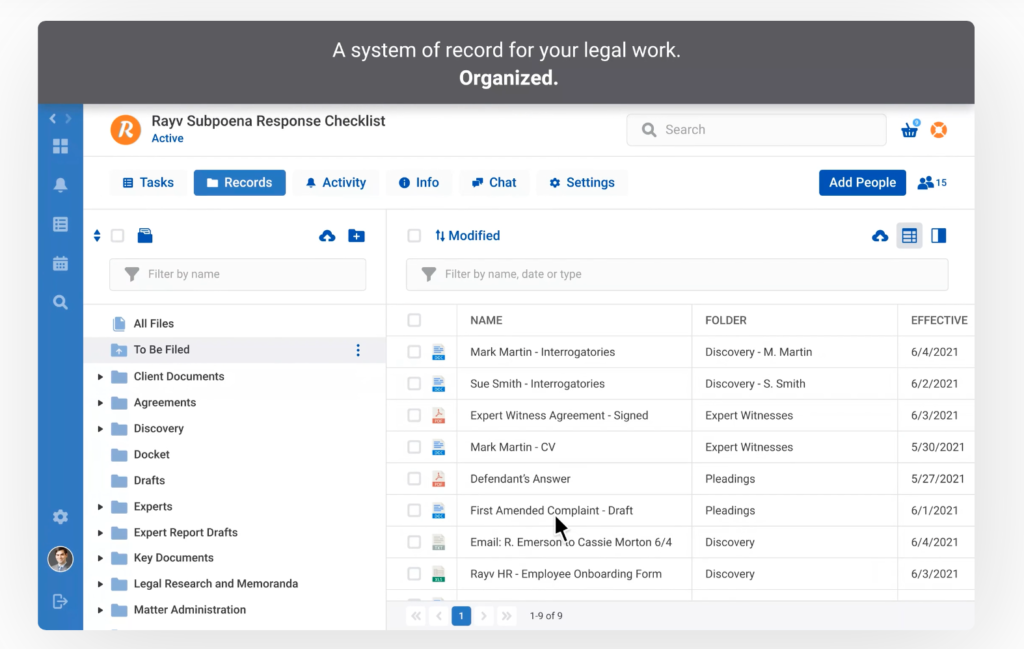
After buying Joinder where is ‘legal operations platform’ Brightflag heading? When it started some years ago the idea was just to use NLP to read billing narratives. They achieved that and then kept going. As CEO, Ian Nolan, told Artificial Lawyer, there is much more to come, including more M&A.
‘We are always looking for potential acquisitions, especially since our series B [$28m funding last year],’ Nolan (pictured above) explained.
‘There will be more acquisitions, but we will not chase M&A to drive revenue, we’re focused on value-added products.’
So, there you go. But, let’s get back to how it all began and then chart the path forwards.
Like a number of other startups in the billing segment, Brightflag realised that they could use NLP to read the text that accompanied law firm bills. This would better enable clients to understand what work had been done – and importantly to be able to quickly know if that work had met outside counsel guidelines, e.g. that the law firm had incorrectly added the billable time of a bunch of associates who were sitting in on a discussion with the client during a lengthy conference call.
This got them going, but they didn’t stop there. They started to expand horizontally across the key areas of legal ops. They are now covering:
- Legal Service Requests
- Legal Spend Management
- Analytics & Reporting
- Budgeting & Forecasting
- Integrations
- Invoice Review
- Vendor Management
- And, Matter Management
The matter management part is now called Brightflag Workspace and Joinder, which was a product that was incubated inside US law firm Orrick, forms the core of that. Joinder had only recently left the firm to be an independent spin-out in April this year when Nolan and team sought to buy them.
‘We have a shared vision of how products should be built. The deal may seem out of the blue [N.B. this is the first M&A deal they’ve ever done] but this was a logical step for us. We had been scanning the market for acquisitions for a while and this plugged a gap,’ Nolan said.
‘Joinder is super slick and beautiful in its design,’ he added.
The gap in question is matter management, e.g. providing an improved intake system and a system of record. Now, with all their additional billing and budgeting capabilities, they’ve got something to help track and manage the actual production of the work itself.

Brightflag now sees itself as far more than a helpful support for reading bills. They are really emphasising that they are ‘a legal operations platform’, i.e. providing all the infrastructure for inhouse legal teams without actually getting into the legal work itself. Or more prosaically, they’re everything in the inhouse donut except for the legal jam.
So, what next? Nolan explained that they will be on the lookout for other companies focused on the same space and that can add to what they already offer, e.g. products that help around billing and matter management.
Artificial Lawyer then asked if after some more tech M&A the next logical step is to build their own consulting and/or ALSP group to service their clients? For example, if you look at companies such as Elevate, and also the Big Four, they are strongly focused on offering a ‘software and service’ approach to ensure real tech engagement and change inside legal teams.
Nolan was interested by the idea and added: ‘For now we are a pure play software company, but maybe that will not always be the case. Tech is only part of change management, so we may need to partner with, or acquire, service companies.’
However, it’s clear that this is not an immediate priority.
Whatever comes next, Brightflag is a good example of a company that starts with one specific point solution, e.g. reading billing narratives, and then expands outwards, initially organically and now via inorganic moves, to build a comprehensive platform.
Last question: are inhouse legal teams really changing? With all the CLM activity and legal ops meetings, is this following through into substantive improvements?
Nolan said: yes.
‘Legal ops teams are making a meaningful difference. Legal teams are collecting data [on outside counsel spend], unlike previously where the only option was to keep using the same firms they went to before.
‘There is so much more support now for legal teams and there are tools that can help them to get out of that loop,’ he said.
I.e. when you have objective data about what you do and what you spend, then you can make change management decisions about how the legal team operates. Until you have that data you cannot do much that is meaningful.
He then added: ‘Legal departments will start to see themselves as at the cutting edge [within their businesses], and we are trying to help them to show their companies what they are doing.’
And that all sounds very promising.